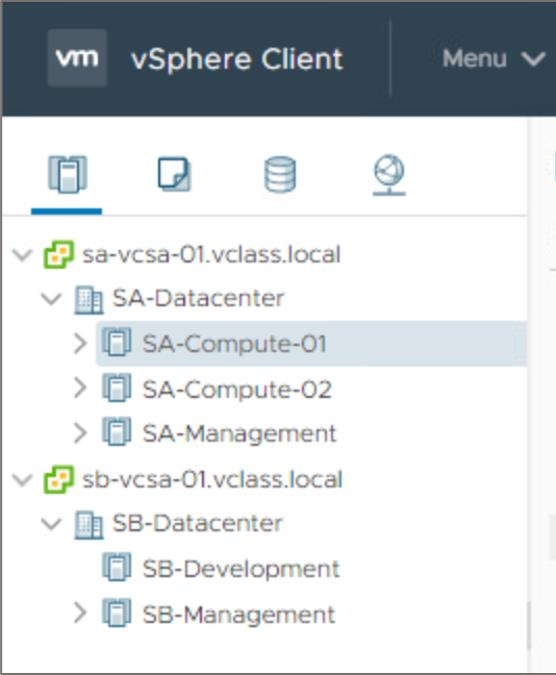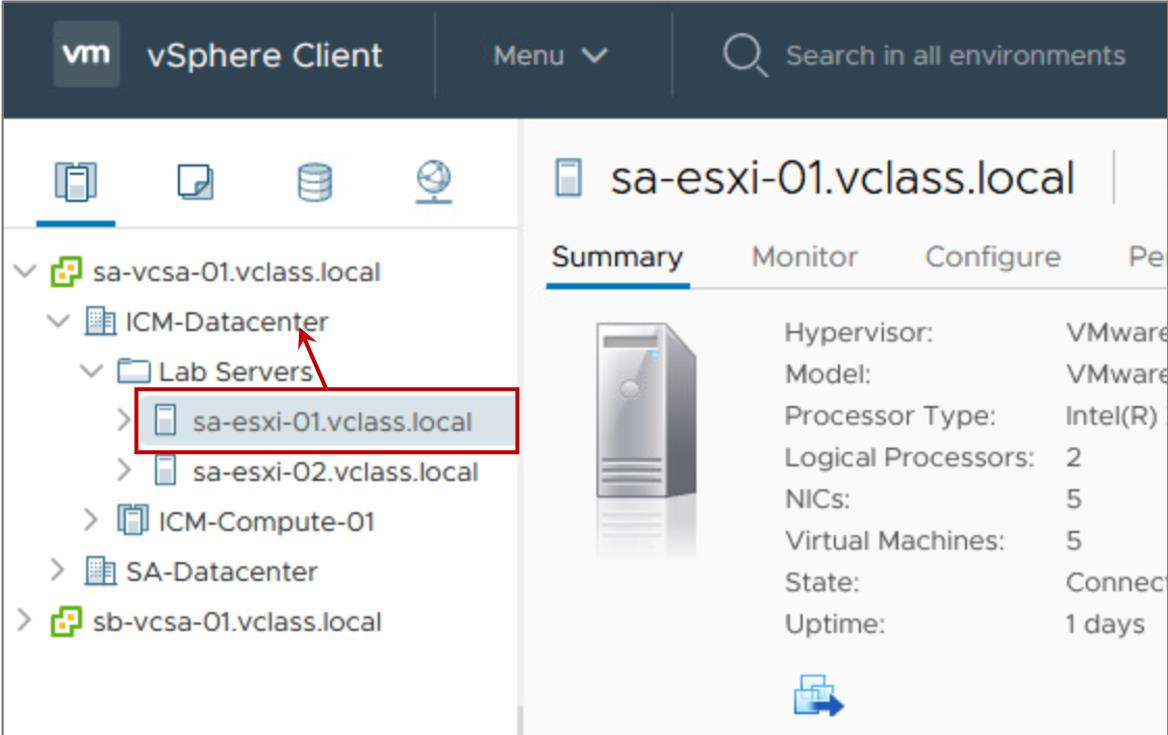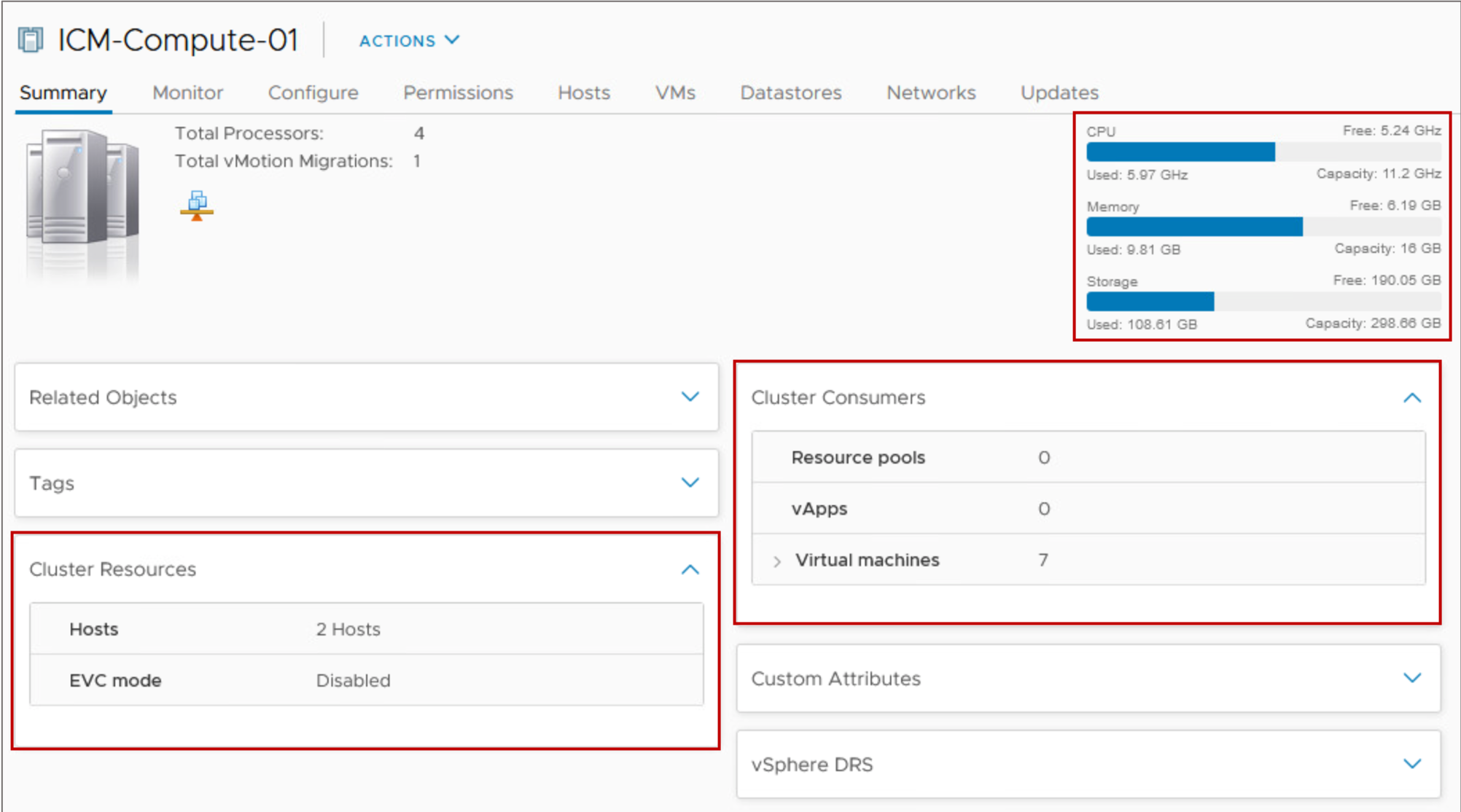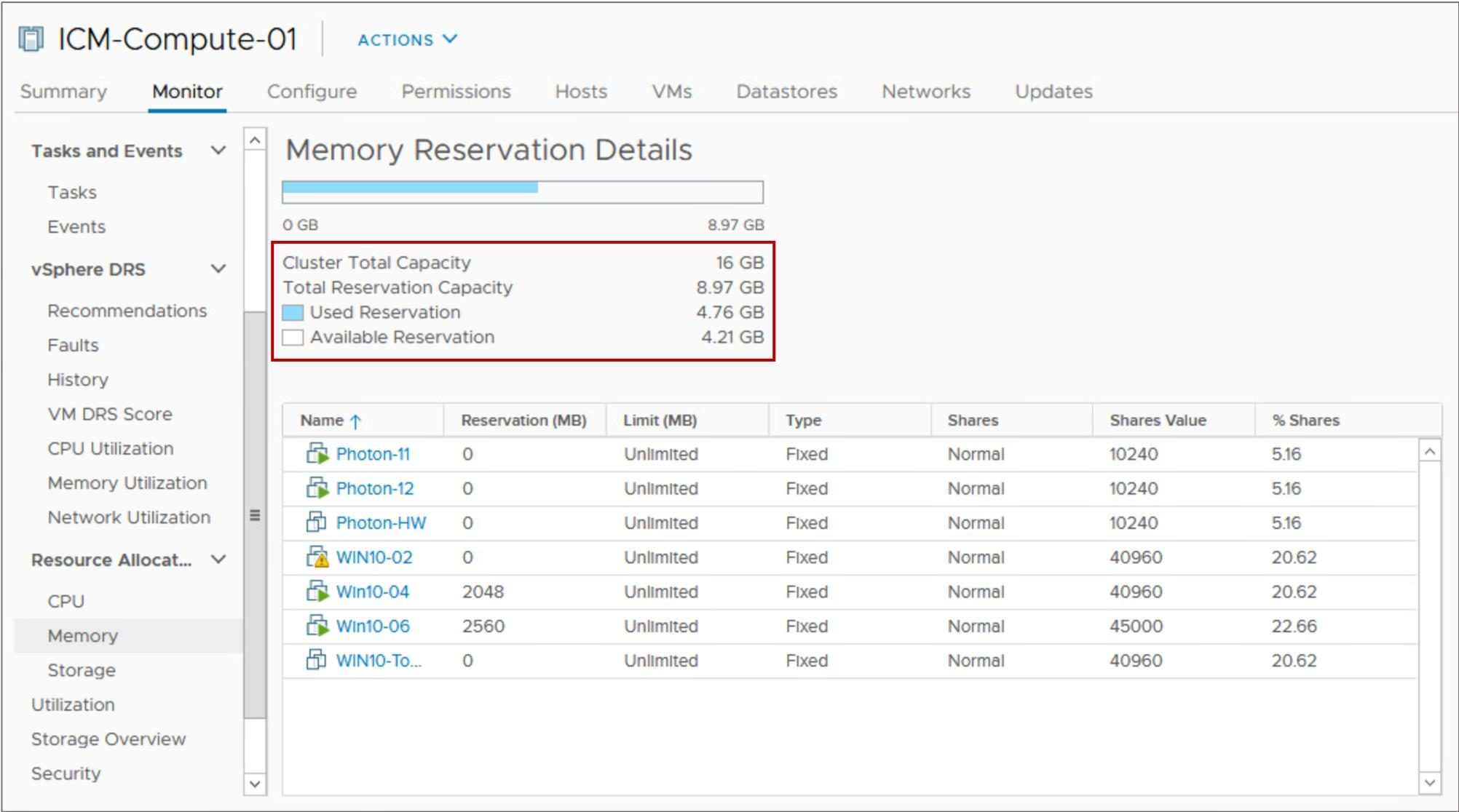
vSphere Clusters Overview
Learner Objectives
After completing this lesson, you should be able to meet the following objectives:
- Describe the benefits of vSphere clusters
- Create a vSphere cluster
- View information about a vSphere cluster
About vSphere Clusters

A cluster is used in vSphere to share physical resources between a group of ESXi hosts.
vCenter Server manages cluster resources as a single pool of resources. You can create one or more clusters based on the purpose each cluster must fulfill, for example:
- Management
- Production
- Compute
A cluster can contain up to 64 ESXi hosts.
Creating a vSphere Cluster and Enabling Cluster Features

When you create a cluster, you can enable one or more cluster features:
- vSphere DRS
- vSphere HA
- vSAN
You can also manage image setup and updates on all hosts collectively.
Configuring the Cluster Using Quickstart
After you create a cluster, you can use the Cluster Quickstart workflow to configure the cluster. With Cluster Quickstart, you follow a step-by-step configuration wizard that makes it easy to expand the cluster as needed. 
Configuring the Cluster Manually
Alternatively, you can use the Configure tab to manually configure a cluster’s settings.

Adding a Host to a Cluster
To add a host to a cluster, drag the host onto the cluster object in the inventory.

Viewing Cluster Summary Information
For a quick view of your cluster configuration, the Summary tab provides general information about a cluster’s resources and its consumers.

Monitoring Cluster Resources
You can view a report of total cluster CPU, memory, memory overhead, storage capacity, the capacity reserved by VMs, and how much capacity remains available.

Review of Learner Objectives
After completing this vSphere Clusters Overview lesson, you should be able to meet the following objectives:
- Describe the benefits of vSphere clusters
- Create a vSphere cluster
- View information about a vSphere cluster